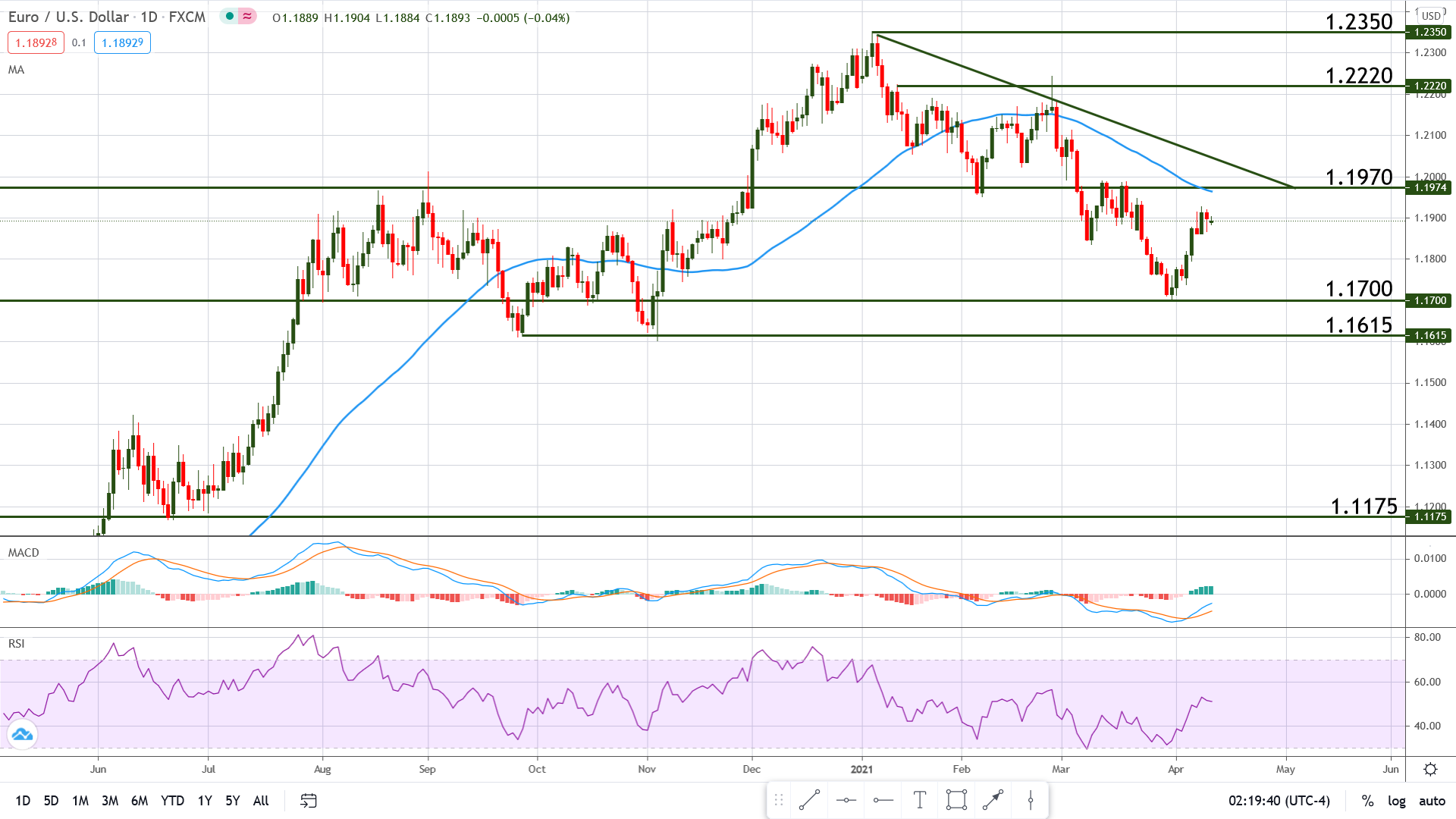US Dollar Poised For a Comeback,
Fueled By Hopes of Elevated Inflation and Retail Sales Data
by Bogdan Giulvezan
The US Dollar retreated off 93.43 highs last week, with the DXY sliding to a low of 92.02 on Friday and trading near 92.30 at the time of writing. Federal Reserve Chair Jerome Powell appeared on CBS’s “60 Minutes” over the weekend and said that the U.S. economy is at an “inflection point”, while also mentioning that hiring and growth are likely to pick up although the coronavirus threat remains high, especially if the reopening is done too quickly.
This week’s highlight will shine on U.S. inflation and retail sales data, which are crucial indicators for the economy’s overall health, as well as for the greenback’s next move.
Key Events for the Week Ahead
The U.S. Consumer Price Index (CPI) will be released Tuesday, April 13 at 12:30 pm GMT, showing changes in the price paid by consumers for a basket of goods and services. The CPI and the Core CPI (a version that excludes food and energy from the calculation) act as the main gauge for inflation and are closely monitored by the Fed in their attempt to contain inflation. Usually, numbers that exceed expectations are beneficial to the US Dollar; for this release, the expected changes are 0.5% (CPI) and 0.2% (Core CPI). Both versions are released at the same time.
Wednesday, April 14 at 2:00 pm GMT, ECB President Lagarde will speak at a Reuters online event and two hours later, Fed Chair Powell will speak at the Economic Club of Washington (via satellite). Audience questions are expected on both occasions, thus the impact may be notable.
Thursday the focus stays on the US Dollar for the release of the U.S. Retail Sales and Core version of the same indicator. The expected change for both indicators is large and will be reflected, probably, in the Dollar’s reaction: 4.7% (previous -2.7) for the Retail Sales and 5.3% (previous -3%) for the Core Retail Sales. Both indicators come out at 12:30 pm GMT.
Chart Analysis – EUR/USD
After finding support at 1.1700, the Euro bulls took control and managed to take price north of 1.1900, in close vicinity of the resistance at 1.1970 and the 50 periods Moving Average.
From a longer-term perspective, the US Dollar is still on the assault but in the short-term, it’s very possible to see a touch of 1.1970 resistance, which may extend into the bearish trend line seen on the chart below.
In the meantime, a bullish break of the 50 Moving Average would add more oomph to the climb but on the other hand, if the U.S. inflation and retail sales data exceed expectations later in the week, we will likely see another drop towards 1.1700.
